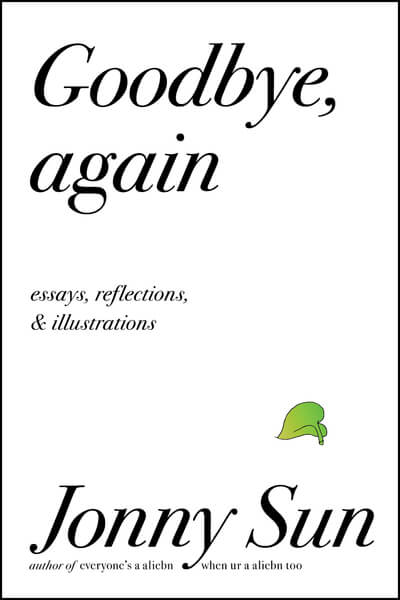What does it mean to find work that you love? To make a home in one city only to move somewhere else for a job? To be friends—real friends—in adulthood? Jonny Sun approaches these questions in his new book, Goodbye, Again. Composed of dozens of short essays and illustrations, Sun’s captivating and immersive book invites readers to listen in as he thinks aloud on the page.
This book is at once sad and hopeful. It’s sad about the cultural pressure to be constantly working. It’s sad about the inevitability of change. It’s sad about the many ways we say goodbye to each other, whether ending a visit or moving away. But it’s also attentive to life and movement in unlikely places. For example, Sun contemplates house plants—their small leaves, tilting to water and warmth. They need the right kind of care for life to take root, and even when a plant seems to die, it can in fact be growing in a different direction.
Through descriptions like these, the reader feels Sun’s desire for renewal. The book is hopeful as it shows how little moments from the past, something as simple as cooking an egg, can reverberate in the present. In this way, we never really say goodbye. We are still together, still remembering each other in small daily ways.
To spend time with this book is to spend time in the private world of a creative, sensitive person who finds life inviting, beautiful and rich, but also overwhelming, scary and exhausting. Goodbye, Again acknowledges the crushing constancy and anxiety of work, but it also celebrates the joy of creating something where nothing was before—the pleasure of being totally immersed in work and the way that work can make us come alive. By acknowledging both sides of this reality in gentle and specific ways, Sun ultimately gives his readers license to experience their own contradictions and to be fully human.


























